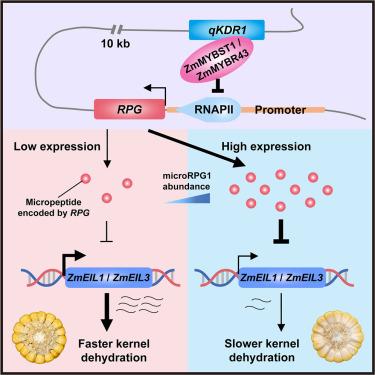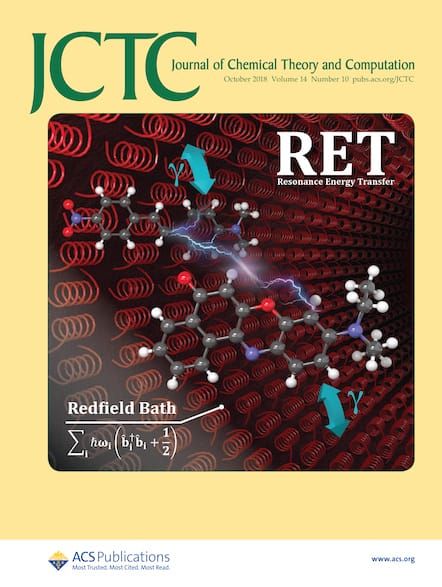一种玉米属特异性微肽控制玉米籽粒脱水
IF 5.7
1区 化学
Q2 CHEMISTRY, PHYSICAL
引用次数: 0
摘要
籽粒脱水率(KDR)是影响玉米机械化收获和籽粒质量的一个重要生产性状;然而,其潜在机制仍不清楚。在这里,我们确定了一个数量性状位点(QTL)qKDR1,它是一个非编码序列,可调控qKDR1调节肽基因(RPG)的表达。RPG 编码一种 31 个氨基酸的微肽 microRPG1,它通过精确调节乙烯信号通路中的两个基因 ZmETHYLENE-INSENSITIVE3-like 1 和 3 的表达来控制灌浆后籽粒中的 KDR。基因敲除 microRPG1 会加快玉米的 KDR。相比之下,过表达或外源应用该微肽在玉米和拟南芥中显示出相反的效果。我们的研究结果揭示了微RPG1在果仁脱水过程中的分子机制,为未来的作物育种提供了重要工具。本文章由计算机程序翻译,如有差异,请以英文原文为准。

A Zea genus-specific micropeptide controls kernel dehydration in maize
Kernel dehydration rate (KDR) is a crucial production trait that affects mechanized harvesting and kernel quality in maize; however, the underlying mechanisms remain unclear. Here, we identified a quantitative trait locus (QTL), qKDR1, as a non-coding sequence that regulates the expression of qKDR1 REGULATED PEPTIDE GENE (RPG). RPG encodes a 31 amino acid micropeptide, microRPG1, which controls KDR by precisely modulating the expression of two genes, ZmETHYLENE-INSENSITIVE3-like 1 and 3, in the ethylene signaling pathway in the kernels after filling. microRPG1 is a Zea genus-specific micropeptide and originated de novo from a non-coding sequence. Knockouts of microRPG1 result in faster KDR in maize. By contrast, overexpression or exogenous application of the micropeptide shows the opposite effect both in maize and Arabidopsis. Our findings reveal the molecular mechanism of microRPG1 in kernel dehydration and provide an important tool for future crop breeding.
求助全文
通过发布文献求助,成功后即可免费获取论文全文。
去求助
来源期刊

Journal of Chemical Theory and Computation
化学-物理:原子、分子和化学物理
CiteScore
9.90
自引率
16.40%
发文量
568
审稿时长
1 months
期刊介绍:
The Journal of Chemical Theory and Computation invites new and original contributions with the understanding that, if accepted, they will not be published elsewhere. Papers reporting new theories, methodology, and/or important applications in quantum electronic structure, molecular dynamics, and statistical mechanics are appropriate for submission to this Journal. Specific topics include advances in or applications of ab initio quantum mechanics, density functional theory, design and properties of new materials, surface science, Monte Carlo simulations, solvation models, QM/MM calculations, biomolecular structure prediction, and molecular dynamics in the broadest sense including gas-phase dynamics, ab initio dynamics, biomolecular dynamics, and protein folding. The Journal does not consider papers that are straightforward applications of known methods including DFT and molecular dynamics. The Journal favors submissions that include advances in theory or methodology with applications to compelling problems.
 求助内容:
求助内容: 应助结果提醒方式:
应助结果提醒方式:


